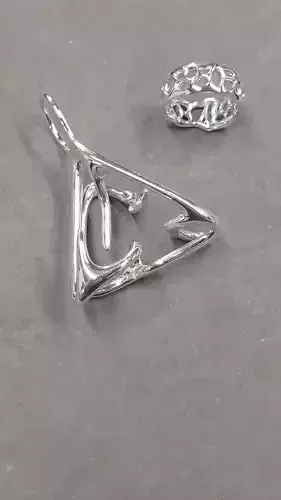1/11
Organic design in jewelry is rooted in the principle of capturing the essence of natural forms. Unlike rigid and symmetrical designs, organic jewelry often features asymmetry, flowing lines, and irregular shapes. These elements mimic the unpredictability and complexity of nature. The key principles include:
Fluidity and Movement: Organic designs often incorporate elements that suggest movement and fluidity, akin to the way water flows or how leaves flutter in the wind. This dynamism adds a sense of life and vitality to the pieces.
Irregularity and Imperfection: Nature thrives on irregularity and imperfection. Organic jewelry embraces these characteristics, celebrating the uniqueness of each piece rather than striving for uniformity.
Texture and Surface Variation: Textural elements are crucial in organic designs. The surfaces of these pieces might be rough, uneven, or intricately detailed, reflecting the tactile qualities found in natural materials.
Influences on Organic Jewelry Design
Organic design in jewelry is heavily influenced by various natural elements:
Botanical Inspiration: Plants and flowers are significant sources of inspiration. Jewelry designs might mimic the delicate curves of petals, the intricate patterns of leaves, or the structural forms of seeds and fruits.
Geological Forms: The shapes and textures of rocks, minerals, and landscapes also inspire organic jewelry. The rugged beauty of a stone or the smooth undulations of a riverbed can be translated into intricate designs.
Marine Life: Oceanic forms, such as seashells, coral, and sea creatures, offer diverse inspirations. The delicate structures of coral reefs or the smooth surfaces of seashells can influence the design and texture of jewelry.
REVIEWS & COMMENTS
accuracy, and usability.











